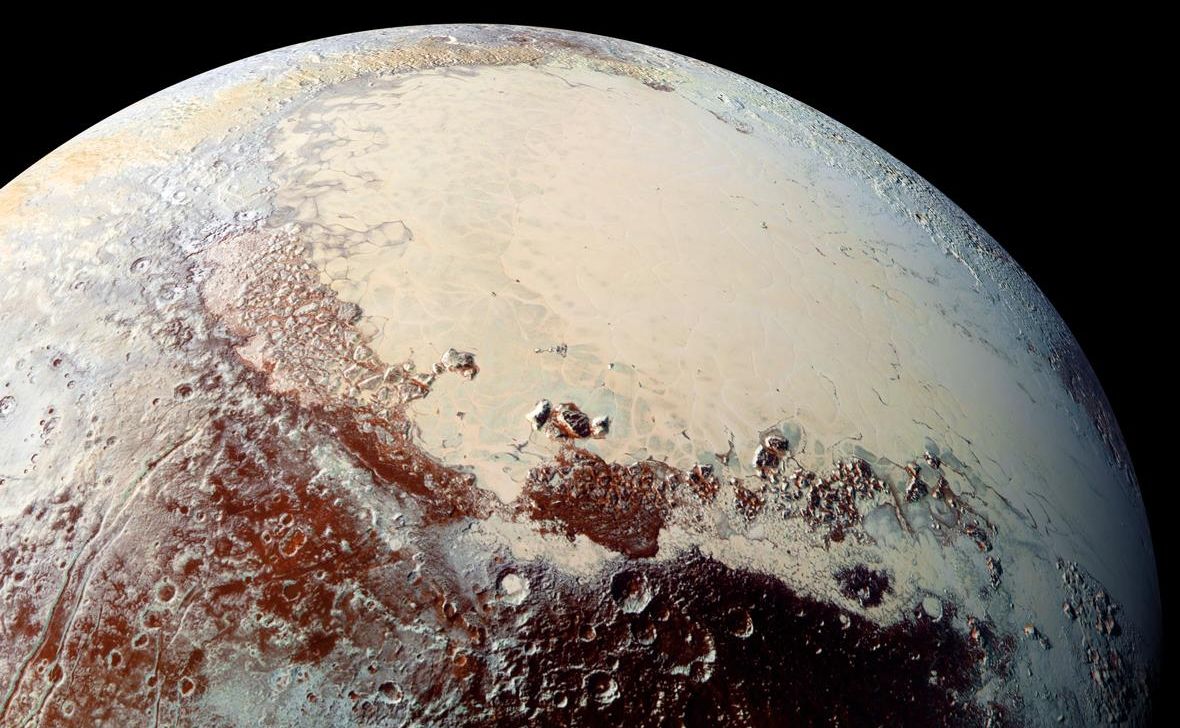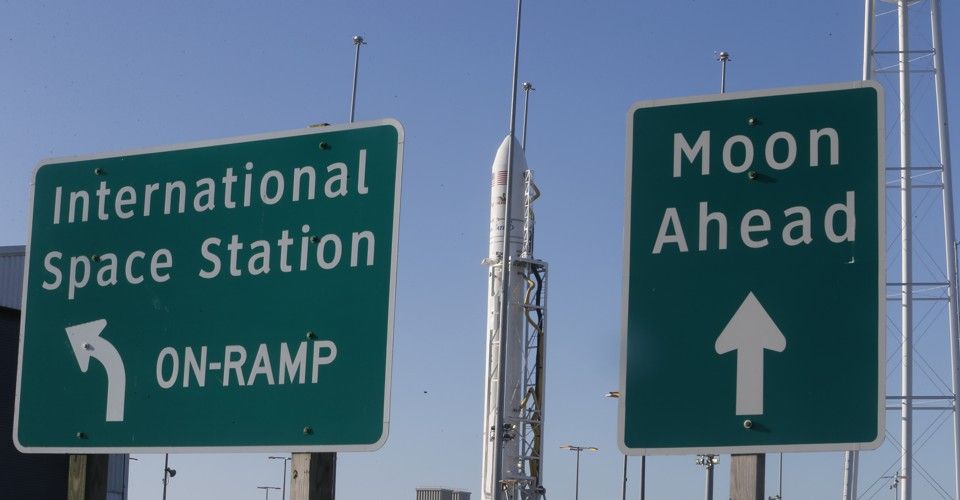Dr Mike McCulloch says his theory explains why galaxies are not ripped apart, without needing dark matter.


A state media video report offers rare footage of China’s Tianzhou-1 cargo and resupply spacecraft, which will launch in April to test refuelling technology needed for the country’s plan for a large space station.
The video shows what is China’s first such spacecraft undergoing development and testing at the AIT facility in Tianjin, North China, as well as 3D renderings of Tianzhou-1 docking with the Tiangong-2 space lab.
The main objective of the Tianzhou-1 mission is to test and verify on-orbit transfer of liquid propellant in microgravity to Tiangong-2, which late last year hosted two astronauts for China’s longest human spaceflight mission so far.


A revolutionary new concept for a fusion powered rocket could not only deliver an orbiter to Pluto but a lander too!
This video represents a research study with…in the NASA Innovative Advanced Concepts (NIAC) program. NIAC is a visionary and far-reaching aerospace program, one that has the potential to create breakthrough technologies for possible future space missions. However, such early stage technology development may never become actual NASA missions. For more information about NIAC, visit: www.nasa.gov/niac.

Let’s just go ahead and address the question on everyone’s mind: will AI kill us? What is the negative potential of transhuman superintelligence? Once its cognitive power surpasses our own, will it give us a leg-up in ‘the singularity’, or will it look at our collective track record of harming our own species, other species, the world that gave us life, etc., and exterminate us like pests? AI expert Ben Goertzel believes we’ve been at this point of uncertainty many times before in our evolution. When we stepped out of our caves, it was a risk – no one knew it would lead to cities and space flight. When we spoke the first word, took up agriculture, invented the printing press, flicked the internet on-switch – all of these things could have led to our demise, and in some sense, our eventual demise can be traced all the way back to the day that ancient human learnt how to make fire. Progress helps us, until the day it kills us. That said, fear of negative potential cannot stop us from attempting forward motion – and by now, says Goertzel, it’s too late anyway. Even if the U.S. decided to pull the plug on superhuman intelligence research, China would keep at it. Even if China pulled out, Russia, Australia, Brazil, Nigeria would march on. We know there are massive benefits – both humanitarian and corporate – and we have latched to the idea. “The way we got to this point as a species and a culture has been to keep doing amazing new things that we didn’t fully understand,” says Goertzel, and for better or worse, “that’s what we’re going to keep on doing.” Ben Goertzel’s most recent book is AGI Revolution: An Inside View of the Rise of Artificial General Intelligence.
Ben Goertzel’s most recent book is AGI Revolution: An Inside View of the Rise of Artificial General Intelligence.
Young Bae of Advanced Space and Energy Technologies in Tustin, California, has improved his photonic laser thruster. was developed with NASA funding. His thruster works because light exerts pressure when it hits something. In theory, it is possible to move an object like a CubeSat by nudging it with a laser beam. In practice, however, the pressure which light exerts is so small that a device able to do a useful amount of nudging would require a laser of unfeasibly large power.
Dr Bae has overcome this limitation by bouncing light repeatedly between the source laser and the satellite, to multiply the thrust. In his latest experiments, Dr Bae has managed to amplify the thrust imparted by a single nudge of the laser by a factor of 1,500, which is big enough to manoeuvre a CubeSat as well as a conventional thruster would. This brings two advantages. First, since no on-board propellant is required, there is more room for instruments. Second, there being no fuel to run out, a CubeSat’s orbit can be boosted as many times as is desired, and its working life prolonged indefinitely.
A suitable laser is required to provide the thrust. Dr Bae thinks it could be in orbit as well. The laser would be powered by solar cells and shepherd a veritable flock of CubeSats, providing the propulsion needed to move and arrange them as required.
While it’s far too early to speculate on who will be the first humans to travel to Mars, we may have an idea of what they will wear: An Israeli-designed space suit.
Together with the Israel Space Agency and the German Aerospace Center, Israeli startup StemRad is suiting up to launch a trial of its new protective suit against cosmic gamma rays on the next flight of NASA’s Orion satellite.
If an initial experiment flight to the moon next year shows that the suit adequately protects the flight test dummy wearing it, StemRad’s suit may be used on the first manned flight to the red planet.


The leading projects for developing a hypersonic spaceplane are Reaction Engines of the UK and Hypermach.
Reaction Engines Skylon
Reaction Engines of the UK is a leader in developing a hypersonic vehicle and hypersonic components. The British government finalized a £60 million to the project: this investment will provide support at a “crucial stage” to allow a full-scale prototype of the SABRE engine to be built. If all goes to plan, the first ground-based engine tests could happen in 2019, and Skylon could be performing unmanned test flights by 2025. In November 2015, BAE Systems invested £20.6 million in Reaction Engines to acquire 20 per cent of its share capital and agreed to provide industrial, technology development and project management expertise to support Reaction Engines during its development phase. It could carry 15 tonnes of cargo to a 300 km equatorial orbit on each trip, and up to 11 tonnes to the International Space Station, almost 45% more than the capacity of the European Space Agency’s ATV vehicle.
Surprised it took this long for this article to surface.
Quantum and travel.
Written by Arjun Walia
It’s called quantum entanglement, it’s extremely fascinating and counter to what we believe to be the known scientific laws of the universe, so much so that Einstein himself could not wrap his head around it. Although it’s called “quantum entanglement,” though Einstein referred to it as “spooky action at a distance.”
Recent research has taken quantum entanglement out of the theoretical realm of physics, and placed into the one of verified phenomena. An experiment devised by the Griffith University’s Centre for Quantum Dynamics, led by Professor Howard Wiseman and his team of researchers at the university of Tokyo, recently published a paper in the journal Nature Communications confirming what Einstein did not believe to be real: the non-local collapse of a particle’s wave function. (source)(source), and this is just one example of many.